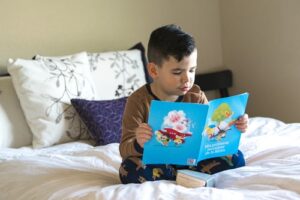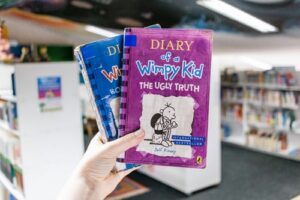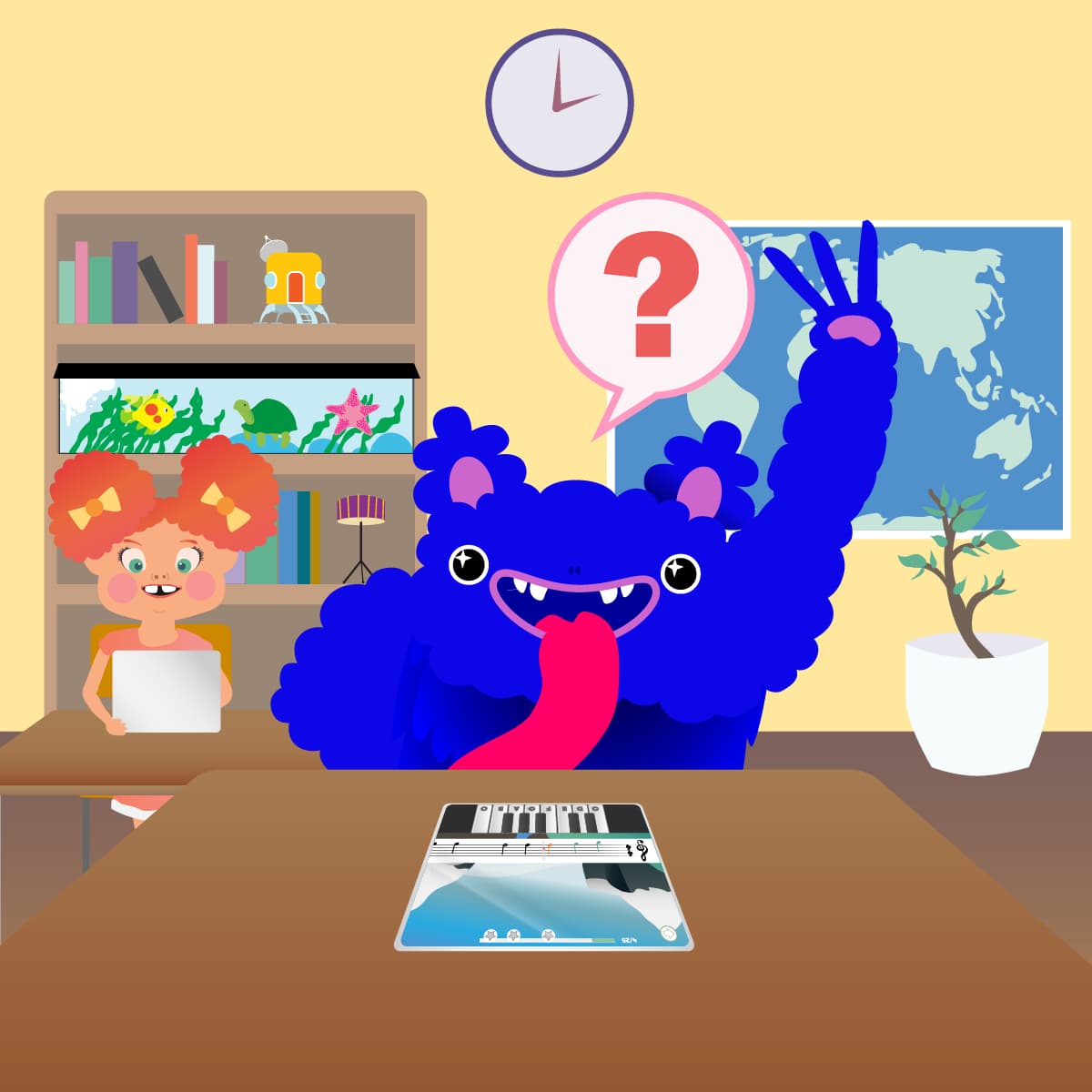By Arctic Meta,
Most people have an idea in their heads of what a good student looks like. They are polite, organised, interested, ready, hungry for knowledge, the kind of kid that does their homework because they generally enjoy doing it. These ideas might not be bad ones, but they’re also not entirely realistic.
The truth is, when it comes to learning, nobody is born a good student. Of course, an individual’s personality does play a big role in their educational journey, but in general, being a good student is more about the successful learning of habits over time. Every good student had to become that student; they all had an origin story. This also means that pretty much every kid in the world can become a great student.
School already takes care of a great deal when it comes to educating kids, but it’s not easy to keep them interested in learning. So what are some great ways to motivate children to learn?
One of the best ways to unlock untold possibilities for kids is through reading. It’s probably no surprise that kids tend to read more when they enjoy it. Below are 19 of the top ways proven to help motivate young learners through reading.
1. Read Familiar Books & Stories

There’s absolutely no problem in reading the same book over and over again. Repetition is something that brings kids a certain level of comfort, it also helps to establish routine, and when they are constantly learning and changing every day, routine can become incredibly important. This is the same reason why some kids might not go anywhere without that ‘Frozen’ DVD, or they have a favourite bedtime story.
Re-reading books, again and again, helps kids to establish the structure of stories; it also helps improve their memory. When it comes to the actual task of reading, repetition helps to strengthen their accuracy and speed.
Reading the same book several times can also give young learners a bit of a confidence boost, especially if they get the chance to read their favourite book with someone new.
2. Connecting Reading to Real Life

Finding a way to connect stories to real-world events can heighten the reading experience for a child. It can also help to give them tools to examine their own lives and experiences. This is often the reason why children can become enamoured with a particular character in a story. Perhaps the character is going through a similar life experience to them, or maybe this fictional person gives them something to aspire to.
Stories can also help children to somewhat understand difficult concepts like loss and grief before they actually have to experience it for themselves.
Another way to bring real life into the story world is to plan activities based on what kids have experienced in books. If the main character likes flying a kite, why not spend an afternoon building one?
3. Don’t Leave Home Without Bringing Something to Read.

Every parent knows the feeling of suddenly being away from home for an extended period of time without something to entertain the kids. Maybe there’s an important doctor’s appointment to attend; perhaps it’s that dreaded time when a drivers’ licence needs to be renewed. It can be a daunting thing for a parent because there’s the reality that life can’t stop to make sure a child is entertained, but also, nobody likes being bored.
The good news is that most experts agree that any form of reading is beneficial for kids. So if they happen to be interested in delving into a brochure about new parking restrictions in the local area, that’s great. However, it’s a great idea to always pack some reading material for those moments when boredom might get the better of them.
Encouraging this habit will also teach children that reading can be a great escape and an excellent activity to fill in time.
4. Discuss the Stories With Your Children

Having conversations about the books kids are reading can be a great bonding experience, but it can also offer valuable insight into the general comprehension of a young learner.
Kids are incredible actors; they’re very resourceful and are experts at using hundreds of pieces of information to navigate situations. Because of this, they can be great at making all the right sounds and expressions to let a grown-up think they completely understand something when they have absolutely no idea what’s going on.
Having conversations and asking questions about the reading material can help a parent to know just what the child understands. It can also present opportunities to clear up misunderstandings, learn new vocabulary and expressions, and even give them the chance to voice their opinion, something they love doing but rarely get the chance to do in the presence of a grown-up.
5. Use Reading as a Reward

In the past two years, it has been especially hard to make sure kids are entertained and rewarded while avoiding excessive screen time. This can be hard because let’s face it, most people (including kids) generally enjoy screen time.
When looking at the attitudes kids have towards screens, it’s important to realise that a lot of this is set up by their parents. Often this begins with TV or computer time being used as a reward. In many cases, TV becomes the reward and being sent to their room to read becomes a common punishment.
Try reframing this. There can be more than one reward for good behaviour, and with the right introduction, reading can be exactly that.
6. Read With Your Children

Every parent has spent time reading to their children, but it can be equally beneficial to just read separate material but in the same room. Kids love being around their parents; they look up to them, mimic them and take most of their cues from them.
Teaching kids to enjoy quiet time reading around others shows them that reading is something people enjoy and isn’t a chore. It also helps them to learn that it’s ok to enjoy time with others in silence: a skill that some adults still never master.
7. Take Your Time

The quickest way to get a kid to hate something is to make them feel stupid while doing it. It’s incredibly important to take the time to sound out unfamiliar words and explain their meaning.
It might seem tedious, but being patient and giving plenty of praise will help reinforce the feeling that reading is a beneficial and enjoyable experience. Slowing things down when reading together can also give parents a chance to work on things like pronunciation and syllable emphasis.
8. Pick Books at the Right Level

Not every child will progress at the same rate when it comes to reading. For this reason, it’s integral to choose the correct material for their reading level. If a book is too easy, children are likely to get bored. If it’s too hard, they will either give up or feel anxious because they want to please their parents but don’t know how to understand the content on the pages.
Helping children find books that are perfect for them is key. When kids have fulfilling reading experiences, they are more likely to continue the habit throughout their school years and into adulthood.
9. Play Word Games

Most people enjoy some form of word game. Whether it’s scrabble, crosswords or even the latest internet sensation ‘Wordle,’ there is a certain level of joy that comes from using the tools of communication for fun.
Word games can also be a valuable tool for helping children to understand the sounds and structure of words. Simple word games like tongue twisters or songs that use WordPlay can be a great place to start. These kinds of games help young learners to understand how words are formed and what they can do if they are slightly altered.
10. Read to Each Other Regularly

Storytime can evolve as a child progresses. At first, the parent can do all the reading, but then, over time, the child can take control more. This can help build confidence in them as readers.
This kind of activity can also be a gateway into children eventually getting enjoyment out of reading alone.
11. Discuss How Words Relate to Each Other

It’s always a great idea to talk about words whenever it’s possible. This gives kids a chance to develop an understanding of the relationships between words and also the basics of grammar. For example, if they see the word beautiful in a book, take the time to explain how this is a word used for describing something, an adjective. There’s a similar word that’s not a describing word, but a thing; beauty.
This simple conversation gives a child an insight into the difference between an adjective and a noun. If a parent isn’t the most grammar savvy, there’s no reason the parent and child can’t discover these things together.
12. Create Positive Feelings Towards Books

In many cases, when a kid seems to not really like reading, it might be because they are actually experiencing difficulties. This causes them to feel anxious, and as a result, they will just try to avoid the task altogether. This tactic is no different from a grown-up putting off doing their taxes.
The simple solution to this is to try to create a positive experience whenever a reading is involved. Create nice feelings around reading but encourage them, using it as a treat and making it special. It’s also important to create an open dialogue. They need to feel that it’s ok to struggle and that they will eventually progress.
13. Try Creative Reading Activities

Extend the experience of reading to enhance a child’s experience and spark their imagination. The possibilities are endless. If a child loves to make up their own stories, why not spend an afternoon crafting their own book out of paper. They can spend their free time creating their own masterpiece to be read to the family later.
Parents can also take ideas from stories kids already love. If they have enjoyed ‘Treasure Island,’ spend some time making a treasure map and maybe even go on a backyard treasure hunt.
Creative reading activities not only reinforce reading as a positive experience they also help create some incredible family memories.
14. Let Your Child Decide What to Read

Kid’s cherish the chance to be in control. The world around them is filled with rules, so they rarely get the opportunity to be in charge of things. When they are allowed to decide what they read, they are far more likely to be fully invested in the reading process.
Letting kids decide what they read also helps to allow them to take risks, which is essential for their development. When they are free to choose whatever they want, they are also more likely to choose something a bit more. It can also give parents a bit of a view into how their interests are changing.
15. Select Book Series

Anyone who’s watched Netflix in the past couple of years knows that often it’s better to start watching a show that has a lot of seasons. It means that there will be a long time before there’s nothing to watch. The same principle can be carried over to reading.
When kids start reading a series of books, it means that they will always have a new book to move on to. It can help to keep them interested in reading for many years, and if they choose the right series, it can also unlock a whole world of possibilities, friends and even other series to read.
As a parent, a book series can also be an opportunity to bond, particularly if it’s a series that has been around for a while. The added bonus of a book series is that it will always take care of Christmas and birthday gift ideas.
16. Encourage Discussion

Many parents might assume that the ability to read something and the ability to understand it are pretty similar, but they’re actually very different skills. It’s entirely possible that a kid can see a foreign word on a piece of paper and have the skills to pronounce it perfectly, but it doesn’t mean the kid actually knows what the word means.
Comprehension is vastly improved for children through discussion. When reading together with a child, it’s great to stop at the end of a page or chapter and ask questions. See what they think is going to happen next. Ask them if they agree with the actions the main character is taking. Get them to share how they might do things differently.
Discussion provides a comfortable place for children to explore words or phrases they don’t completely understand yet.
17. Share Your Enthusiasm for Reading

Anyone who has accidentally used a bad word around a child knows that they are sponges and incredibly mimics. The same goes for enthusiasm. Children will naturally gravitate towards joyful situations. They feed off excitement because it makes them feel good.
If a child sees their parent is genuinely excited about reading, they’re probably going to want to see what all the fuss is about. This also will help them to see that learning isn’t a chore; it’s an exciting process of discovery, which better prepares them for school.
18. Try Game-Based Learning

The method of learning through games is certainly not new. It’s a concept that has been around for years. The reason it’s generally so successful is that it caters to a child’s innate need to play. When kids are engaged in game-based learning, they tend to be more motivated and engaged. They will happily give their attention to game-based learning for much longer than a traditional learning exercise.
There are many gamified tools out there for both parents and teachers. One of the most successful is the Mussila Music School. This is an award-winning application that helps kids gain a full musical education through games and play. The best part about Mussila is that it’s designed to be used without the need for supervision. The only thing required is an internet connection.
The great news is that the Mussila team is getting ready to release a new app that takes the same award-winning formula and applies it to helping kids learn how to read. The new app is called ‘WordPlay’ and will be out soon. Follow Mussila on social media to stay up to date on its release.
19. Develop an Atmosphere of Reading

This is about creating a culture within the household where regular reading is a normal and enjoyable activity. It is also about encouraging all forms of reading, not just books. For example, some parents might not want to include comic books in reading material, but they are equally as good. Comics often need to explain large pieces of information in small spaces which follow a very strict discipline. This means that kids are more likely to pick up vocabulary in comic books they might never experience in a novel.
The main idea behind creating an atmosphere of reading is to embody the idea that all reading is good reading.
Why is it Difficult to Motivate Children to Read?

There isn’t just one answer to this question. There are many factors that determine why it’s difficult to motivate a child to read, but in many cases, it comes down to the level of exposure they have with reading when they are young and how it is presented to them.
Generally speaking, once a child has lost interest in reading, it’s quite difficult to motivate them to get back into it. The most important thing is to try to avoid this happening in the first place.
Conclusion

Reading is a fundamental life skill that has evolved in humans over millions of years. It’s not just something that’s enjoyable; it’s something that is necessary for every adult to be able to function.
Experts agree that the more exposure kids have to reading, the better. So if it’s possible to encourage kids to put down their screens for a bit and pick up a book, they will be better off in the future.














